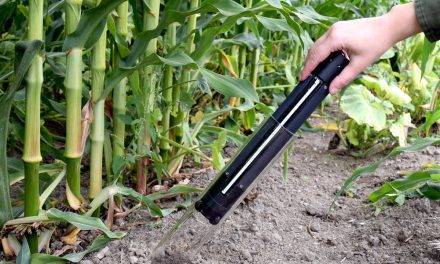
How multiple factors of climate change affect soil

by Freie Universitaet Berlin
A team of ecologists at Freie Universität Berlin studied soil and how it was affected by multiple factors of climate change. The team, led by Prof. Dr. Matthias Rillig, experimentally examined effects of up to 10 factors of climate change by randomly adding an increasing number of such factors. Results on soil functions and biodiversity showed consistent trends with increasing number of factors added, irrespective of what the factors were. The results give a rare glimpse into what might happen under climate change when considering a wide range of factors simultaneously: there were ecological “surprises,” and it was quite difficult to accurately predict effects when many factors were involved. The study highlights the urgent need to focus on multifactor studies and appears in the current issue of Science.
Imagine soil in the city or on an agricultural field: what will it have to deal with? Specifically, how many anthropogenic factors will act on it? There might be increasing temperature, drought, the presence of microplastic, various pesticides, heavy metals, salinity, atmospheric nitrogen deposition—a wide range of factors with different modes of action and different effects. Such a situation is very difficult to capture in experiments, because such a study would have a high corresponding number of factors, and all combinations of such factors. For example, an experiment examining the effect of 10 interacting factors would have over 1000 treatment combinations. Such experiments are not possible in ecology.
Likely for this reason, soil ecologists have so far studied mostly the effects of one or two factors at a time. “About 99 percent of the over 1000 papers we screened for this study only examined effects of one or two factors on soils, with very few experiments looking at more factors,” explains Dr. Anika Lehmann, a member of Professor Rillig’s team at Freie Universität Berlin.
Rillig and co-workers then examined the effects of 10 factors of climate change in a microcosm experiment. First, each factor was examined on its own. Then the team looked at the effects of having more and more factors included by randomly adding factors from the set of 10 factors. This way, they could ask: What is the effect of just the number of factors, rather than what they actually are? The results were quite surprising, given the wide range of factors that were used: For all the responses measured, parameters related to soil carbon storage and biodiversity of fungi, there was a clear trend with the number of factors included; this trend was a decline in soil functions and in biodiversity.
This means that the direction of effects could be known simply by knowing how many factors were acting on the soil and its organisms, irrespective of what they actually were. For predicting the actual effect, it was still helpful to know which factors were involved, and it was very difficult to impossible to predict what the exact responses were as an increasing number came into play, but the direction of effects was clear.
“The consequences of these results are a bit sobering, but there is also some good news here,” explains Rillig. First, this means that scientists are currently still quite ignorant of what might actually happen with climate change in reality, with more and more factors acting on ecosystems. In addition, there may be some surprises in store: For example, in the experiment, soils became water-repellent with many factors applied, something that was not apparent at all from looking at the single-factor results.
On the other hand, this might also mean that everything helps—every factor that we eliminate or reduce will potentially help soils and ecosystems. Moreover, some factors are interrelated, such as factors of climate change or pesticide applications, which means that by reducing some (via changes in behavior or suitable policy measures), others could be reduced, as well. “What has become very clear from our study is that we need to rethink climate change biology with a focus on the multitude of factors and their interactions,” says Rillig.
Source and full text – Phys.org
Picture CC0 Public Domain



















